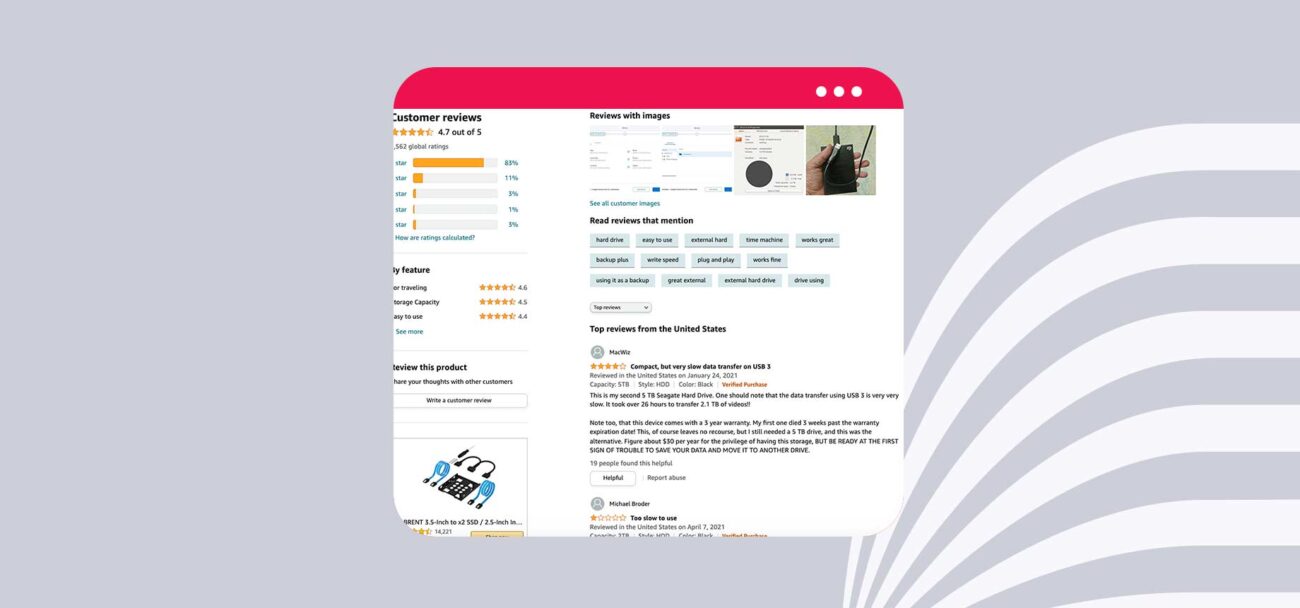
If there is one learning that retailers can take from 2020 and 2021 is that the digital commerce scene is stronger than ever. According to a Statista report, over two billion people purchased goods or services online, and during 2020 ecommerce sales surpassed 4.2 trillion U.S. dollars worldwide.
As online shopping volume grows, so do customers’ demands and preferences. Meeting customers where they are and catering to the different needs of each shopper is one of the main driving factors for ecommerce businesses to start their own or join online marketplaces. In 2020, spending on these platforms accounted for over 60% of online global sales.
Because it became a successful strategy for all brands across different industries, the marketplace business model expanded into various categories that now fulfil both businesses and their customers’ needs. Along with other ecommerce strategies and functionalities, one can even exceed their expectations.
But still, no matter what kind of marketplace your brand is joining or if you are building one yourself, there are common features to look out for that will assure and improve the online store experience while offering user-friendly interfaces.
A few boxes must be checked when approaching a marketplace business model, such as having a solid, clear product page, different payment options and user-friendly experiences that will bring customers even closer to your brand.
This is why, from onboarding and search engines to product page structure and checkout processes, commerce platforms are increasingly upping their game and retailers should keep in mind the mandatory components of an online marketplace. Here they are.
One of the best ways to attract new sellers is making the user experience of building new catalogs, inserting products, and organizing orders as easy as possible. This is due to features like a solid order management system, where clients can track the status of their products, sales volume and more.
The Order Management System (OMS) is a way for sellers to keep track of all orders, regardless of the sales channel, through a single source. With an interactive and easy to use interface, sellers can check on all the status from the moment the end customer places an order to the point where the products get delivered to the chosen address.
With the VTEX OMS, for instance, stores are able to integrate orders and inventory across all channels to deliver a consistent experience whether the orders are from the ecommerce website, marketplace, brick-and-mortar stores or mobile apps. Beyond how easy it is, it also optimizes fulfillment and delivery while saving money.
Seller onboarding can prove to be a hassle for retailers. To make this process easier for your sellers, a good practice is to set up a user-friendly page, containing all the needed information for sellers’ registration and their first access to the platform.
Be sure to link that page on your navigation bar to make it more accessible for your new and existing sellers. Another good way to make onboarding easier is to prepare short videos for your sellers, with each one displaying one step of the onboarding process.
A good product page layout is fundamental for navigation and for a clear understanding of what your product is. Beyond standard product information, some marketplace platforms also allow sellers to display videos and descriptions, plus customer questions and spreadsheets with the different benefits and features of the selected products and services. The more information is available, the better it is for the end-customer.

A brand strategy involves brand recognition and a good relationship with customers, so making your brand visible and recognized should be one of the main priorities when setting up a store inside an online marketplace platform. This is fundamental to reaching your target audience, especially when it comes to new customers discovering your business.
Plus, it removes the notion that marketplace brands are generic brands. This is not true and the digital commerce world shows that more and more online, known brands with solid ecommerce operations will be moving into the marketplace universe.
That can be achieved through a customizable landing page for your brand, where buyers are able to understand what your brand is about and what kind of products can be found. Apart from different designs, some marketplaces also offer the possibility to highlight specific SKUs and other curated content as part of each business marketing strategy.
When sharing content in an ecommerce setting, most brands make use of a Content Management System (CMS). With a CMS there is no need for whole website updates every time new content is published.
With VTEX CMS, ecommerce managers are able to create and edit the content that will compose their website. Through a completely headless structure, VTEX stores can integrate systems and easily develop and alter their layout as needs arise. In the content and the purpose-led world for brands, it is only natural that customers will value good branded content that both informs and sells. This is fundamental for grabbing attention and, consequently, increasing sales volume.
Online user reviews can significantly impact your sales revenue since brands that are positively seen and evaluated tend to have better sales. User reviews may seem somewhat simple, but they stand as one of the most used and effective online marketplace features.

Not only that, search engines and various websites value positive content. When users review your products positively, the product will rank higher on online searches and therefore have increased visibility. With that, you’re more likely to be seen as an authority or reference in your industry.
Leveraging new search technologies is fundamental because customers want to find what they need easily. There are several ways to do so, but all of them lead to a greater conversion rate, better ranking for organic search and a better experience overall for the end customer. Intelligent search is one of them.
With artificial intelligent features, marketplaces can make it easy for shoppers to find what they are looking for with personalized search experiences and dynamically created navigation pages.
The intelligent search features go beyond search results and also impact on sales and merchandising scenarios. With intelligence, sellers can associate their products with other brands’ products depending on what they are selling in a way that allows, customers to discover new things and stores by looking over at the suggested links given by the marketplace platform.
Not only do customers discover new SKUs but they can also increase their order volume depending on what is offered. Win-win for all!
With the rise of digital payments and the popularization of different payment methods like Buy Now, Pay Later (BNPL), it is very important to offer the most out of all the options of payment gateways that exist. Prioritizing a marketplace that does that, if you’re joining one, or making sure you offer sellers all the possibilities is fundamental for the success of your sales. The payment step must be seen as a part of the buying process and not only as a consequence of it.
This is why checkout experiences matter so much when talking about payments: it is the most crucial part of the online buying process and perfecting this flow guarantees a lower cart abandonment rate. Make sure you understand buyers’ preferences and what are the industry standards, also looking at what your competitors offer not to be left behind.
By becoming a marketplace you get to reach broader audiences, increase your product assortment and also count on incremental revenue, which can usually take time and money in a traditional ecommerce. The marketplace trend is a way for ecommerce businesses to explore new revenue streams by expanding product offering without the burden of dealing with inventory and fulfillment.
Combining all the functionalities mentioned above is all that matters for both seller and buyer experience while shopping online. One of the most important thing for the online shopper is experience. And for sellers is a unified commerce approach. With the VTEX Commerce Platform, VTEX clients can power their omnichannel and ecommerce experiences with everything from distributed order management to advanced pricing and promotions and more.
Gathering all functionalities above, VTEX customers from different industries have successfully ventured over to the marketplace business model for a new stream of revenue. Here are some of the success cases from our clients and partners.
Project N95 is the national clearinghouse for sourcing critical PPE and medical supplies. In early 2020, they saw the need to help and launched their own online marketplace to distribute critical PPE to frontline healthcare workers and vulnerable communities’ high-risk groups.
With the VTEX powered online marketplace, Project N95 was able to provide a clear, buyer-friendly means of selling with a posted price format where customers can easily place orders.
One of the most important features for the brand was the Order Management System, which enabled Project N95 to process and support orders on a much larger scale. Beyond that, they were able to broaden out the product base, adding products that are less likely to be ordered in bulk. Find out more details about this success case here.
Unilever, one of the biggest global CPG brands, reached out to VTEX to build a solid B2B marketplace operation, which was delivered in a matter of mere weeks thanks to our headless architecture.
In addition to rapid time-to-revenue, VTEX also brought to the table a highly-personalized configuration, complete with a powerful pricing engine, which fully supports the CPG giant’s complex operations. Personalization was a deal-breaker for Unilever and VTEX was able to offer it all.
Everscore is a brand with the goal of promoting cannabis benefits to the curious consumer that may have always wanted to explore cannabis products but never had an easy and trustworthy way of sourcing them.
They looked at VTEX to build a marketplace strategy focused on a data-driven platform that revolves around its audience and the growth of the seed-to-shopper experience. Through VTEX’s OMS, the brand is able to differentiate products depending on the different regulations and strategies for each of the SKUs.
Success cases such as the ones above can be a source of inspiration for companies approaching this business model keeping in mind the key online marketplace features mentioned above. All in all, it is important to keep up with market trends in order to stand out among competitors — and VTEX is happy to help businesses achieve that!

